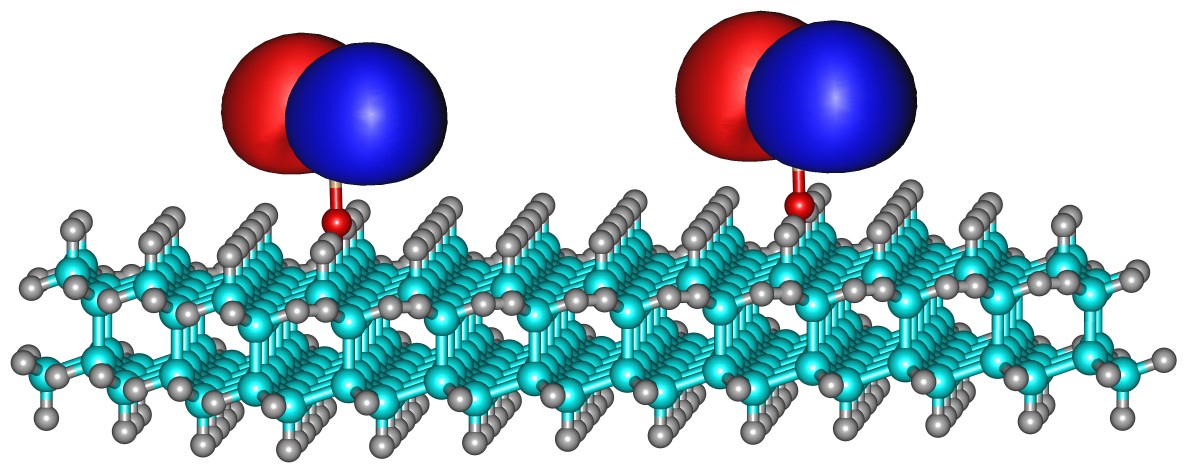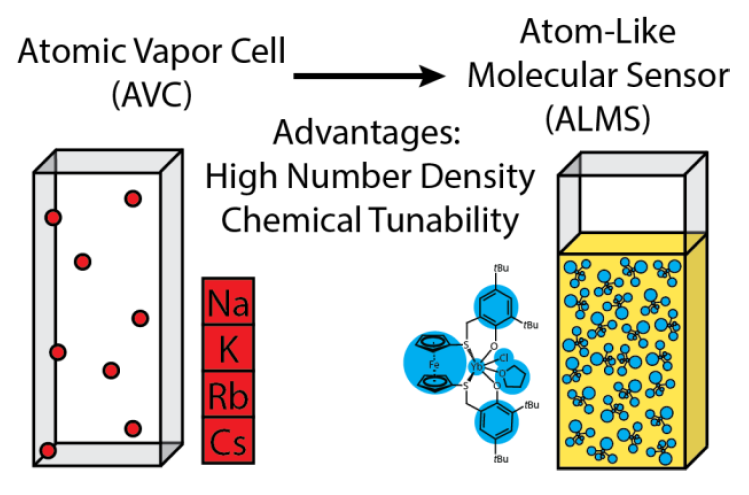
Optical Cycling Center (OCC) for Charged Molecules
Optical cycling in molecules is advancing, with laser cooling now possible for diverse diatomic and polyatomic molecules. Extending this technique to charged molecules presents both challenges and opportunities. Our research defines optimal properties for optical cycling in charged molecules, identifies candidate ions, and addresses specific challenges. Through collaboration, we’ve screened numerous potential candidates and identified trends useful for designing optical cycling centers for charged molecules.

bi-OCCs
We are exploring a new way to cool down molecules by placing two special parts, known as optical cycling centers (OCCs), on the surface of a diamond. These OCCs can interact with light in a way that helps to lower the temperature of the molecules, making them incredibly cold. By using two OCCs instead of one, we hope to make the cooling process more efficient. This approach could lead to new advancements in technology and scientific research, allowing us to study and utilize these ultracold molecules in exciting new ways.

From Molecule to Surface-Bounded OCCs
We’re exploring larger ligand sizes in molecules to develop surface-bound optical cycling centers (OCCs). These OCCs offer advantages over free-space manipulation by relying on surface chemistry and solid-state devices. Recent findings show high diagonal vibrational branching ratios (VBRs) exceeding 90% for SrOPh-Adamantanes, with vibrational decays primarily limited to specific modes. This suggests that ligand size doesn’t systematically affect OCC optical cycling properties, enabling multiple photon scattering with few pumping lasers.

Atom-Like Molecular Sensors
The ultranarrow linewidths of (thiolfan)YbCl(THF) at room temperature enable extremely low-field Magnetic Circular Dichroism (MCD), useful for studying spin characteristics, especially in magnetic field sensing. MCD imaging dynamically maps magnetic fields by employing a permanent magnet in two orientations. An external magnetic field induces a shift between right- and left-hand circularly polarized excitations, producing MCD signals whose intensity varies with magnetic field strength. With high number density from direct solvation and high g-factors, our MCD-based magnetometry matches sensitivity levels of other spin-based magnetometers.

Exploring Crystal Field Anisotropy, Environmental Fluctuations, Inhomogeneous Linewidth and Spectral Hole Burning in Yb(III) Complexes
This research utilizes computational methods to analyze the anisotropy of the crystal field in Yb(III) complexes and examines the influence of environmental fluctuations on the inhomogeneous spectral linewidth. With an ensemble inhomogeneous linewidth of 150 GHz, spectral hole burning (SHB) experiments can be conducted, achieving a hole linewidth of 100 kHz. This facilitates access to state preparation and measurement (SPAM) techniques.

